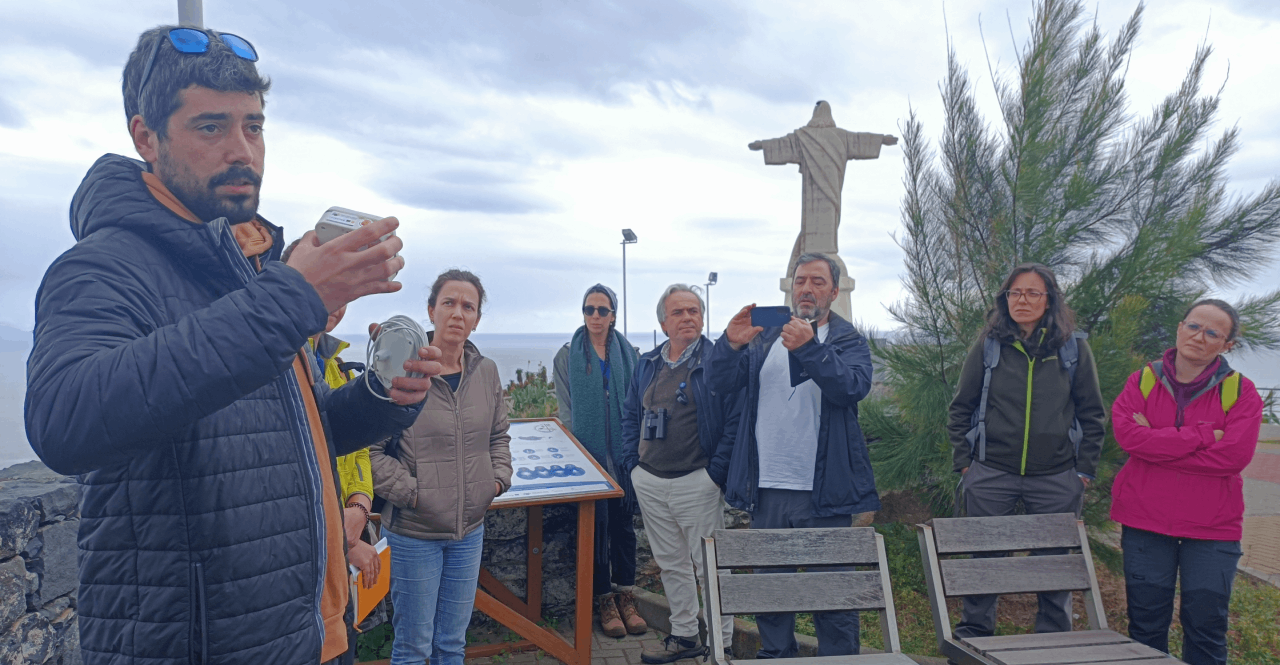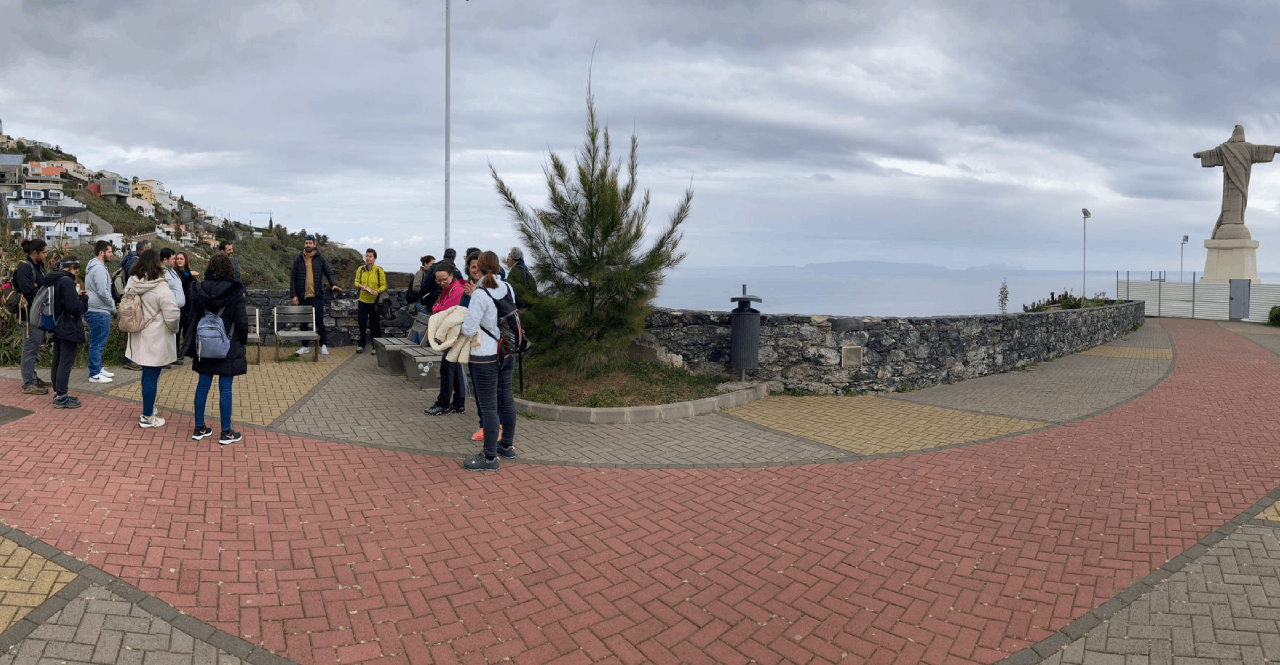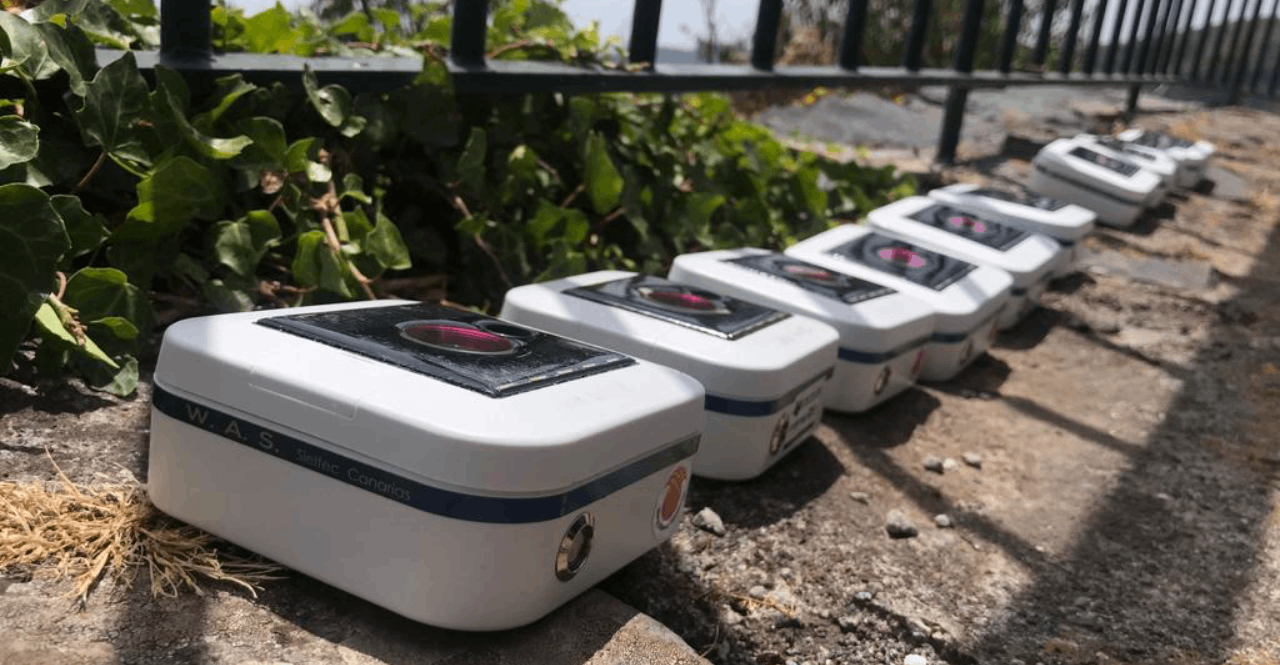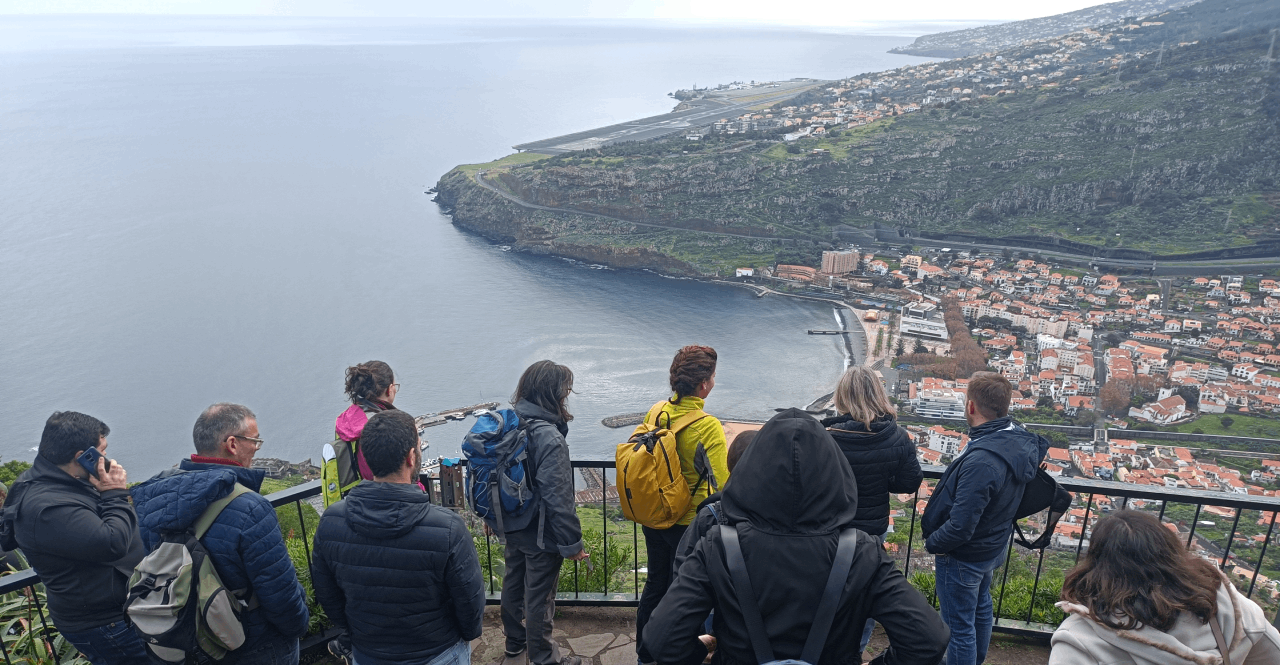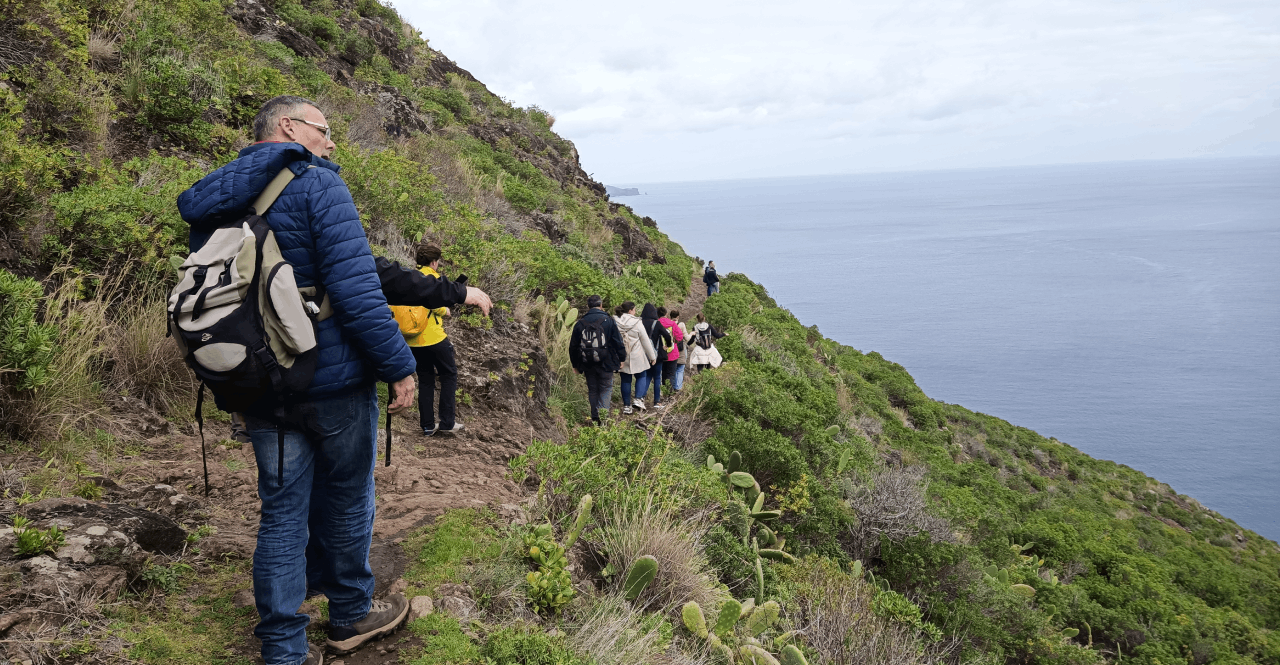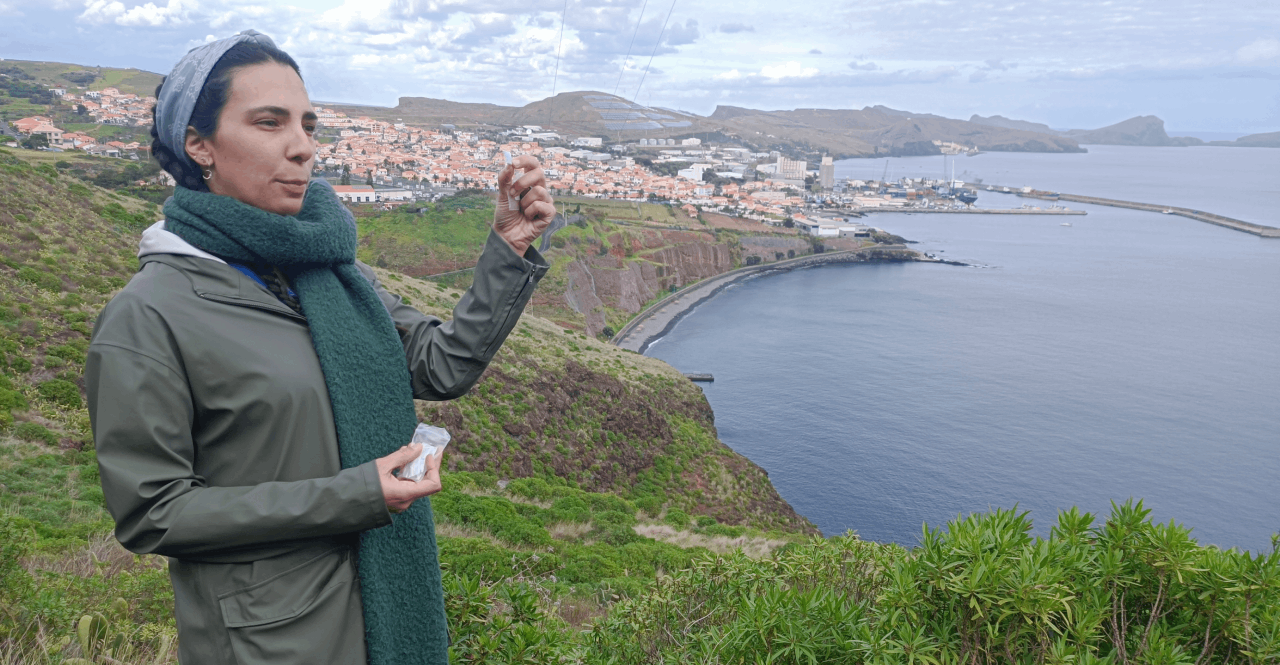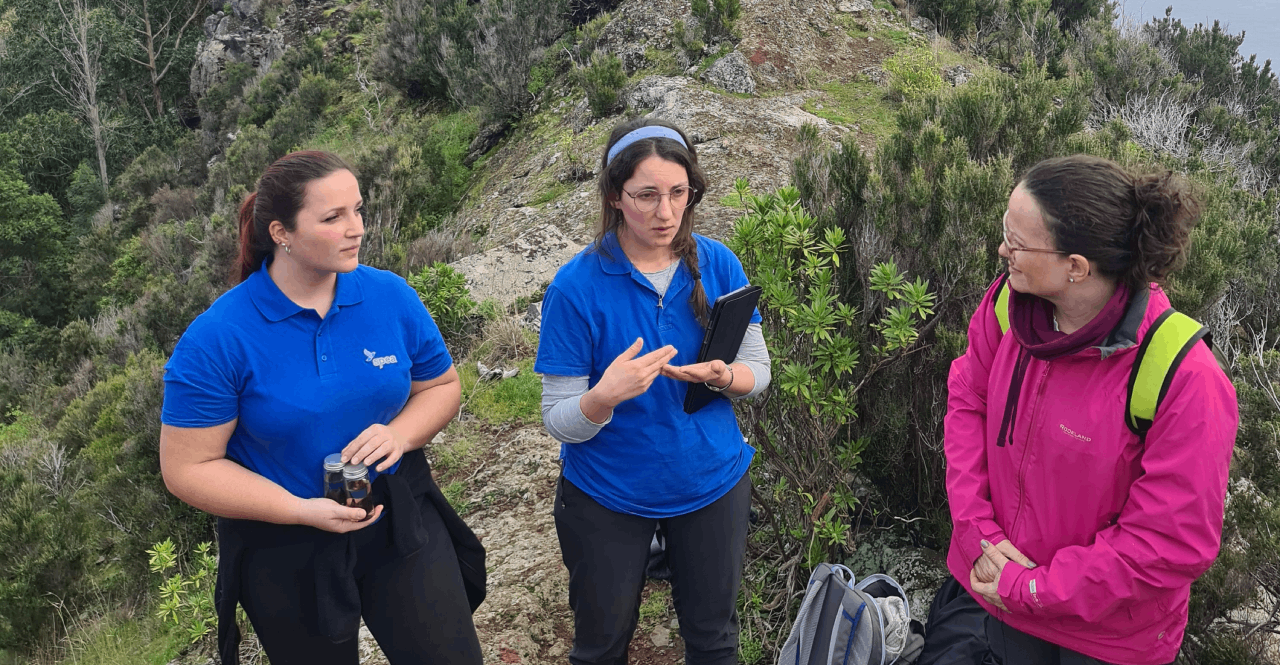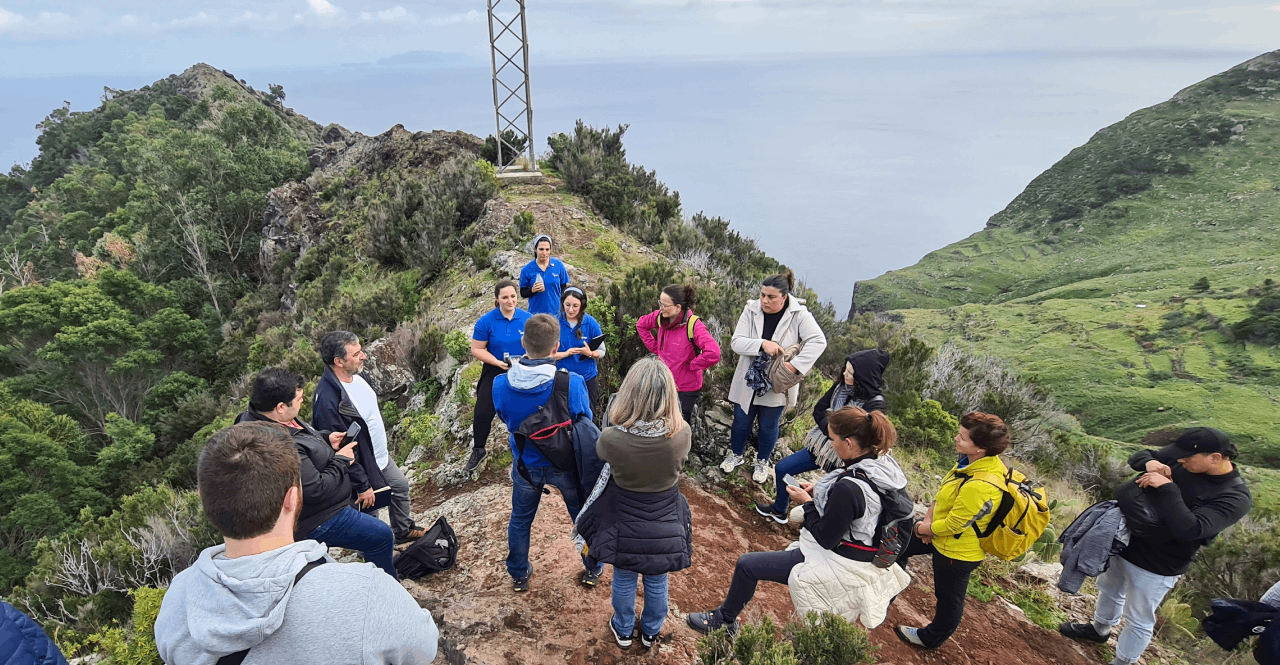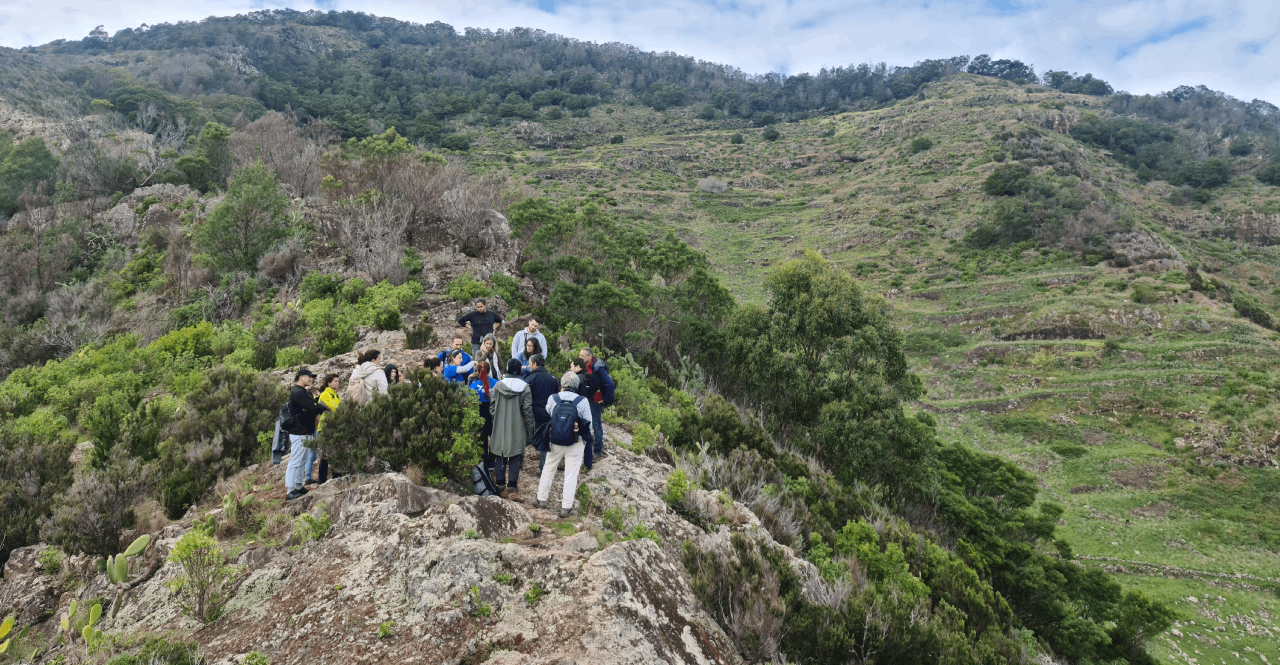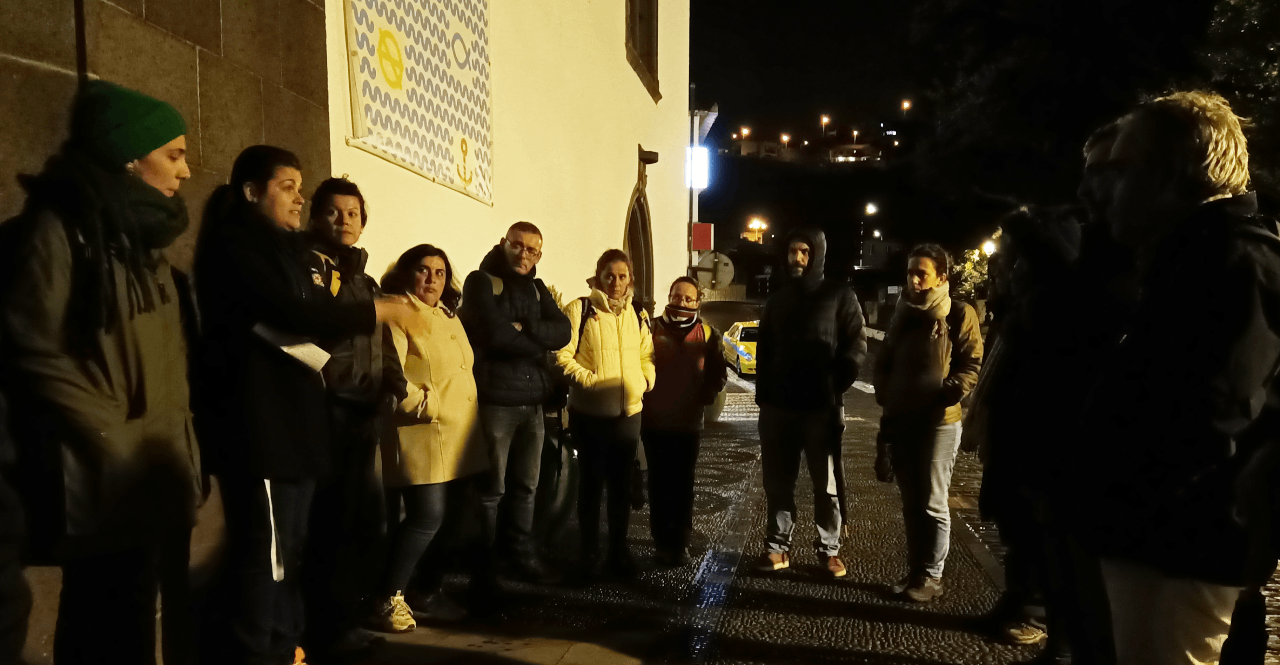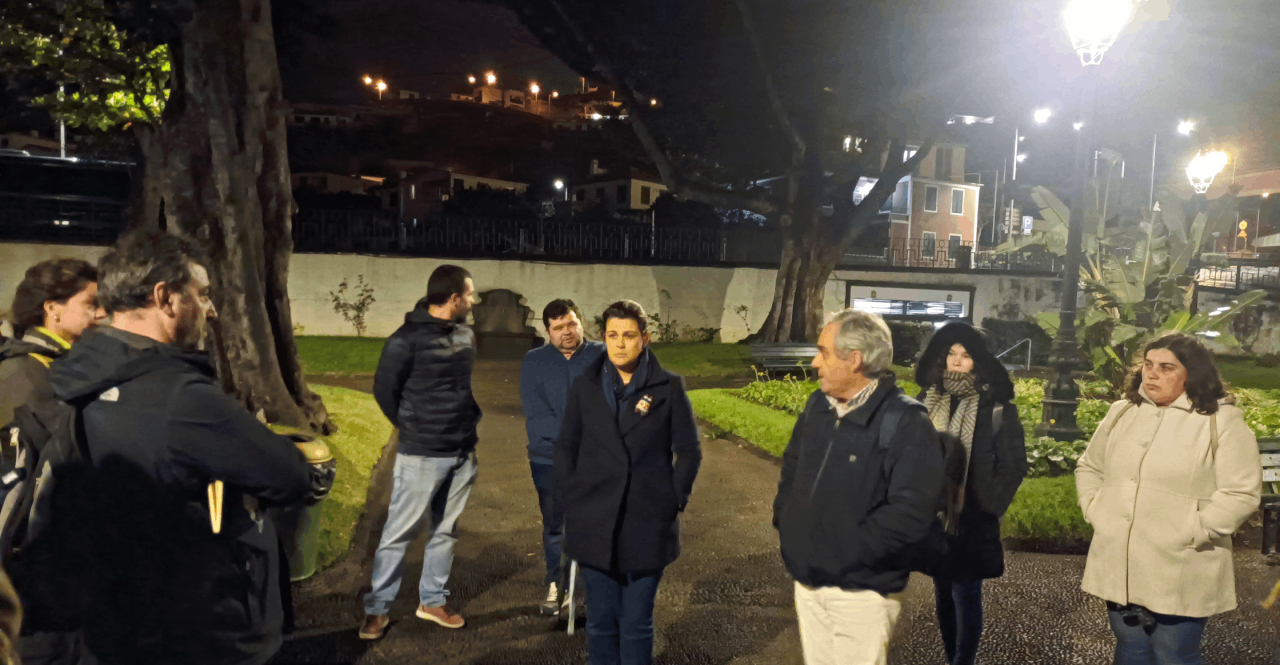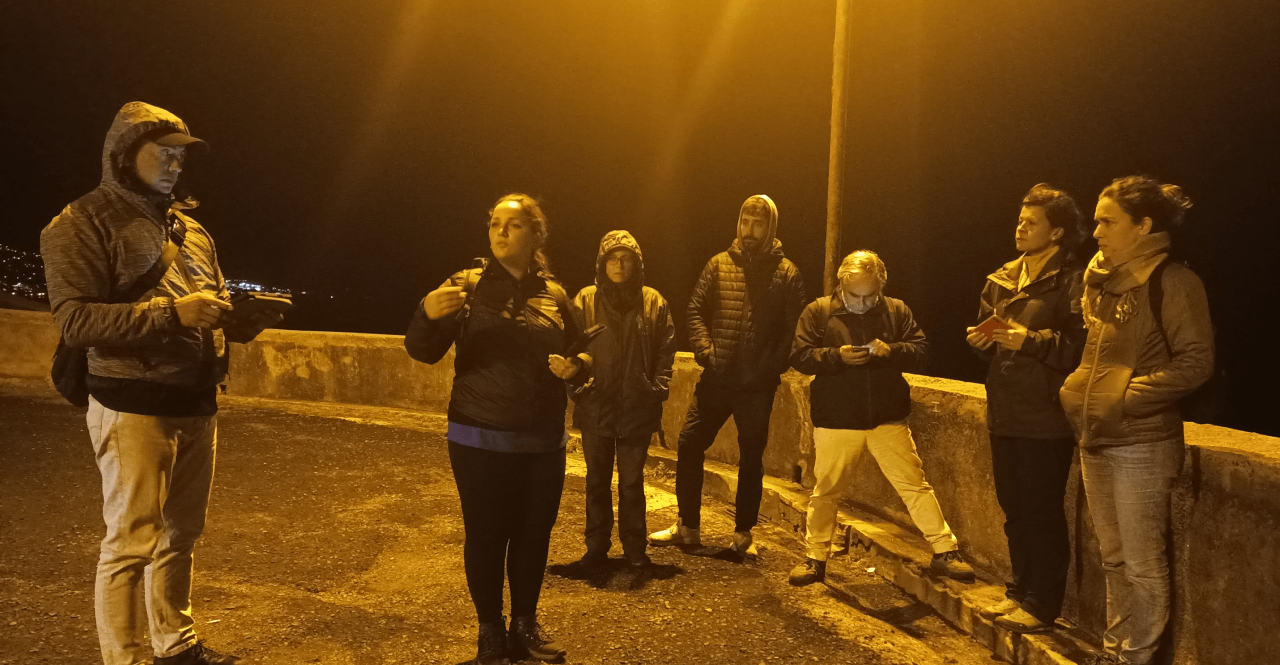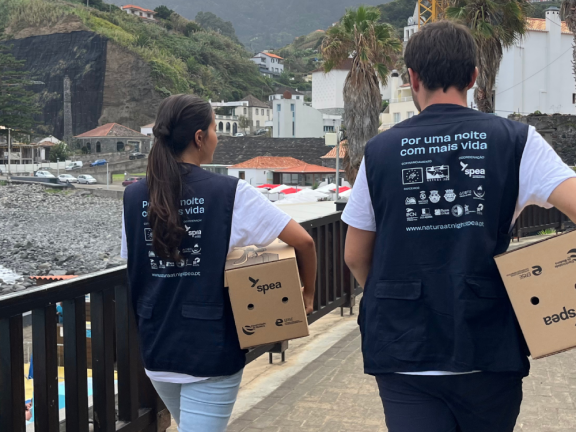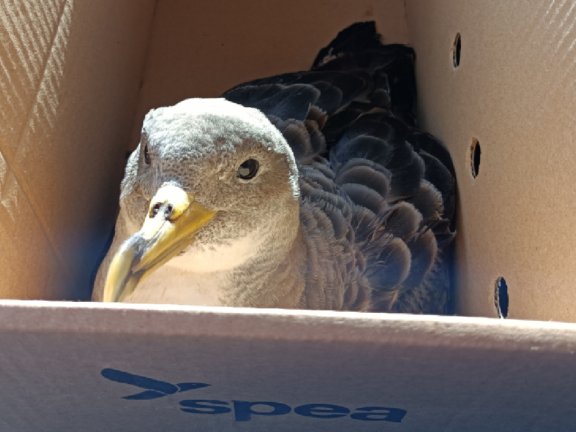The progress of the LIFE Natura@night project is closely monitored by an external team of monitors. They are the ones appointed by the European Commission to verify on the ground the proper implementation and application of European funds.
Last week (7 and 8 February), during their visit, and in addition to technical and financial meetings, it was possible to visit some of the work already started, verifying in loco some preliminary results and other necessary adjustments to meet the objectives. SPEA, accompanied by its local partners in Madeira, led a tour along the east coast.
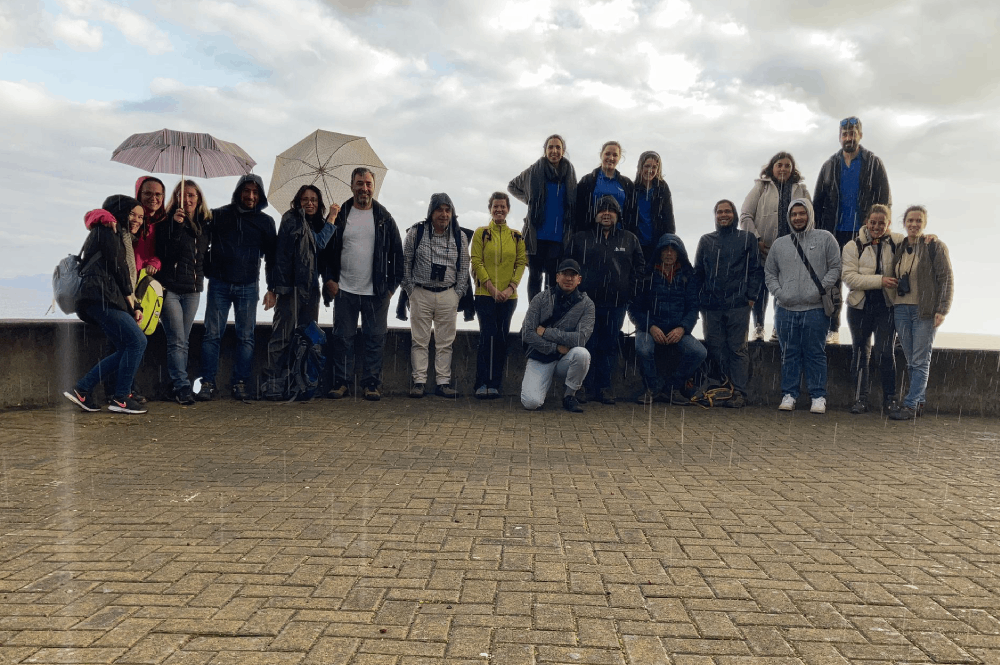
The first stop on this journey was at Cristo Rei do Garajau, where you could get to know the light pollution monitoring network that is being installed in Macaronesia through photometers. These are sensitive devices, specifically developed for this purpose, which capture the light intensity and allow a daily monitoring of the lighting changes, available live in:
Between Pico do Facho and Ribeira do Natal we demonstrated the work carried out in search of seabird colonies, through direct surveys of nests and the installation of autonomous recorders (ARUs) that allow us to record the birds’ vocalizations and thus have an estimate of the population size of existing colonies.
On the same route, the work done with light traps to capture insects attracted by artificial lights was also presented. In Madeira alone, 7300 specimens of insects were collected, from nocturnal butterflies to beetles, ants and even grasshoppers. In those same sampling points, the existing bat species are being identified, through the use of AudioMoths and capture nets.
Already in Santa Cruz, we showed the urban area already intervened in terms of changing the luminaries. This remote controlled lighting has allowed the municipality to save 400,000 Euros per year, which have been reinvested in more changes in favour of energy sustainability and nocturnal biodiversity.
Back in Funchal, in a last stop in Gaula, we demonstrated the methodology of coastal light pollution censuses carried out fortnightly. These serve to identify and monitor sources of light pollution at sea, during which the activity of vessels along the coast is recorded and their lighting is characterised.
Our teams dedicate many hours, day and night, to this work, which involves both fieldwork and data analysis and interpretation. We also often rely on the precious help of volunteers, who contribute to our cause, and to whom we offer our special thanks.
